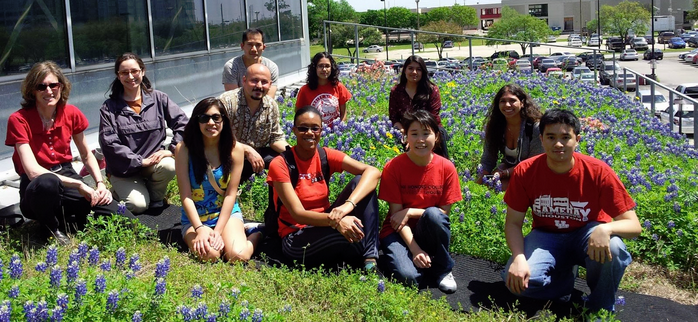The bluebonnet is a hardy annual flower native to Texas. It is very drought-tolerant and forms a rosette of low-lying leaves. When it blooms, the bluebonnet sends up a 20-40 cm stalk of familiar blue and white flowers. To care for your own bluebonnet, use well-draining soil with little fertilizer - bluebonnets form a symbiotic relationship with Rhizobium bacteria that produce nitrogen for the plant to use. The one pictured above is in a hydroponic setup.
Growing bluebonnets by seed is rather tricky, since the flower is designed to grow in arid climates. The seeds are covered by a very hard coat that delays germination; thus, many of the seeds you plant will not germinate until the next growing season. Their natural habitat is quite unforgiving, so if one generation of plants dies out, there will be another one waiting to sprout. Unfortunately, gardeners do not want to wait that long to see the bluebonnets flower, so you can scarify the seeds with a knife or sandpaper or use acid to break down the seed coat.
It is a common myth that picking bluebonnets is illegal in Texas. However, it is not against the law to do so, despite what you've been told. There are other laws that are often broken when people try to pick bluebonnet flowers, though, such as trespassing on private property.

.JPG)
.JPG)
.JPG)
.JPG)
.JPG)
.JPG)
.JPG)
.JPG)
.JPG)
.JPG)
